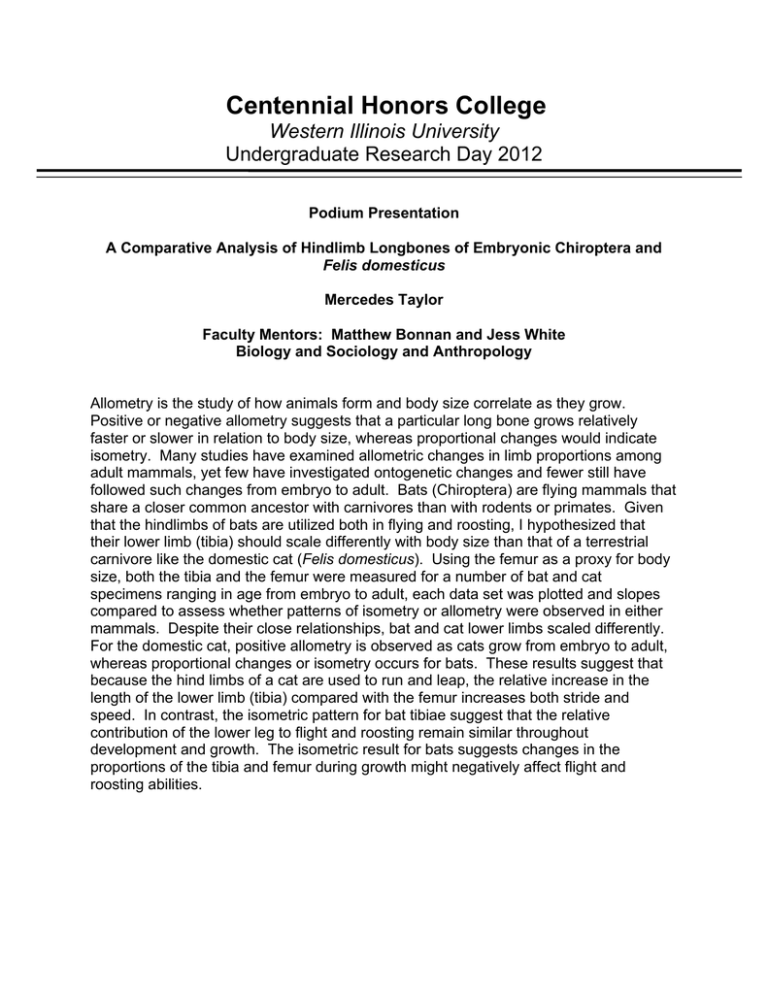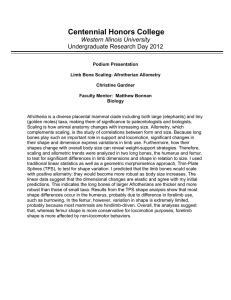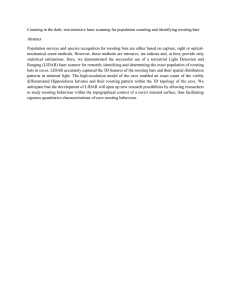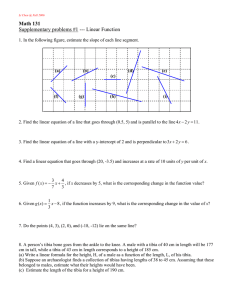Centennial Honors College Western Illinois University Undergraduate Research Day 2012
advertisement

Centennial Honors College Western Illinois University Undergraduate Research Day 2012 Podium Presentation A Comparative Analysis of Hindlimb Longbones of Embryonic Chiroptera and Felis domesticus Mercedes Taylor Faculty Mentors: Matthew Bonnan and Jess White Biology and Sociology and Anthropology Allometry is the study of how animals form and body size correlate as they grow. Positive or negative allometry suggests that a particular long bone grows relatively faster or slower in relation to body size, whereas proportional changes would indicate isometry. Many studies have examined allometric changes in limb proportions among adult mammals, yet few have investigated ontogenetic changes and fewer still have followed such changes from embryo to adult. Bats (Chiroptera) are flying mammals that share a closer common ancestor with carnivores than with rodents or primates. Given that the hindlimbs of bats are utilized both in flying and roosting, I hypothesized that their lower limb (tibia) should scale differently with body size than that of a terrestrial carnivore like the domestic cat (Felis domesticus). Using the femur as a proxy for body size, both the tibia and the femur were measured for a number of bat and cat specimens ranging in age from embryo to adult, each data set was plotted and slopes compared to assess whether patterns of isometry or allometry were observed in either mammals. Despite their close relationships, bat and cat lower limbs scaled differently. For the domestic cat, positive allometry is observed as cats grow from embryo to adult, whereas proportional changes or isometry occurs for bats. These results suggest that because the hind limbs of a cat are used to run and leap, the relative increase in the length of the lower limb (tibia) compared with the femur increases both stride and speed. In contrast, the isometric pattern for bat tibiae suggest that the relative contribution of the lower leg to flight and roosting remain similar throughout development and growth. The isometric result for bats suggests changes in the proportions of the tibia and femur during growth might negatively affect flight and roosting abilities.






